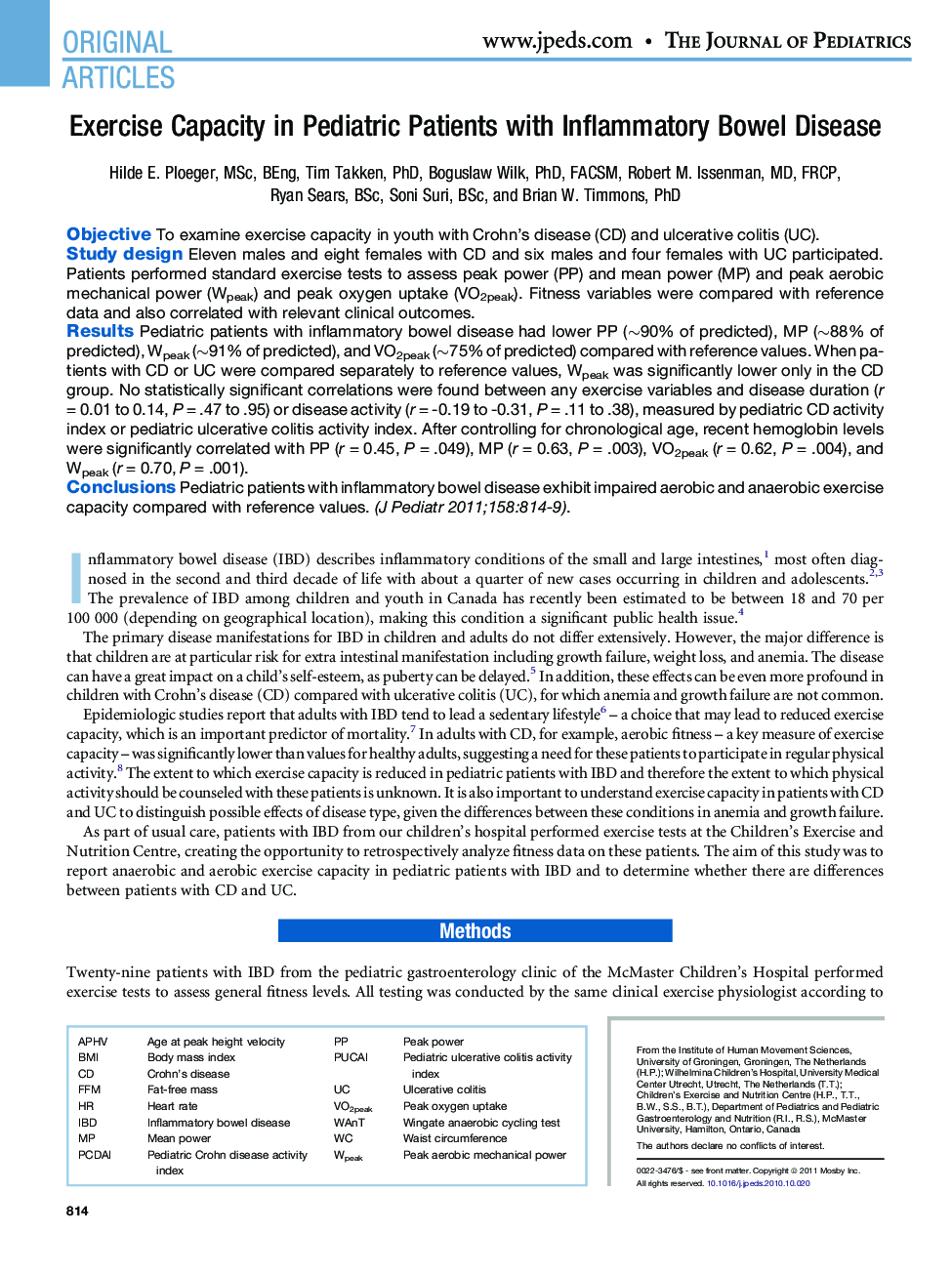| Article ID | Journal | Published Year | Pages | File Type |
|---|---|---|---|---|
| 4166858 | The Journal of Pediatrics | 2011 | 6 Pages |
ObjectiveTo examine exercise capacity in youth with Crohn's disease (CD) and ulcerative colitis (UC).Study designEleven males and eight females with CD and six males and four females with UC participated. Patients performed standard exercise tests to assess peak power (PP) and mean power (MP) and peak aerobic mechanical power (Wpeak) and peak oxygen uptake (VO2peak). Fitness variables were compared with reference data and also correlated with relevant clinical outcomes.ResultsPediatric patients with inflammatory bowel disease had lower PP (∼90% of predicted), MP (∼88% of predicted), Wpeak (∼91% of predicted), and VO2peak (∼75% of predicted) compared with reference values. When patients with CD or UC were compared separately to reference values, Wpeak was significantly lower only in the CD group. No statistically significant correlations were found between any exercise variables and disease duration (r = 0.01 to 0.14, P = .47 to .95) or disease activity (r = -0.19 to -0.31, P = .11 to .38), measured by pediatric CD activity index or pediatric ulcerative colitis activity index. After controlling for chronological age, recent hemoglobin levels were significantly correlated with PP (r = 0.45, P = .049), MP (r = 0.63, P = .003), VO2peak (r = 0.62, P = .004), and Wpeak (r = 0.70, P = .001).ConclusionsPediatric patients with inflammatory bowel disease exhibit impaired aerobic and anaerobic exercise capacity compared with reference values.
